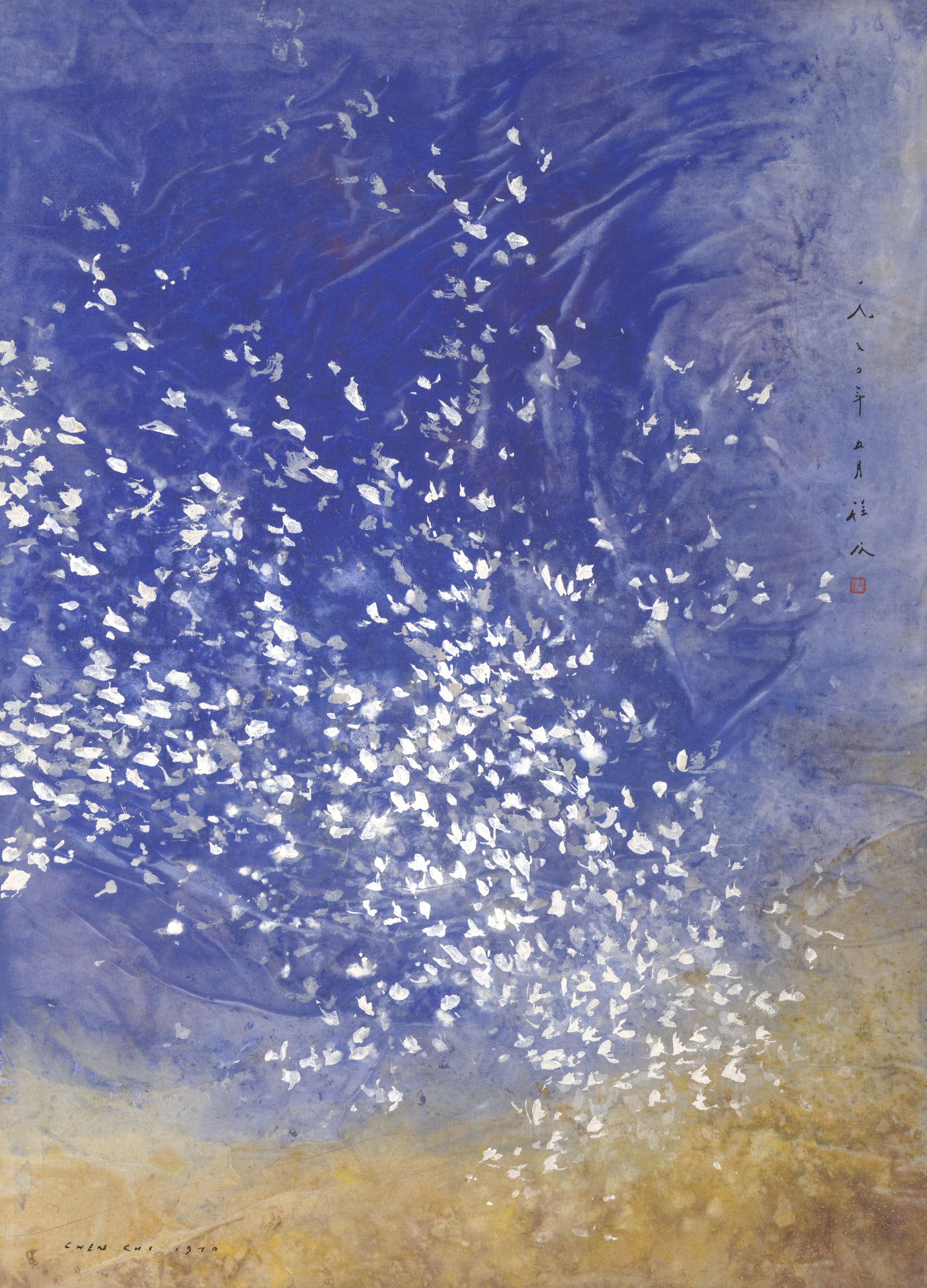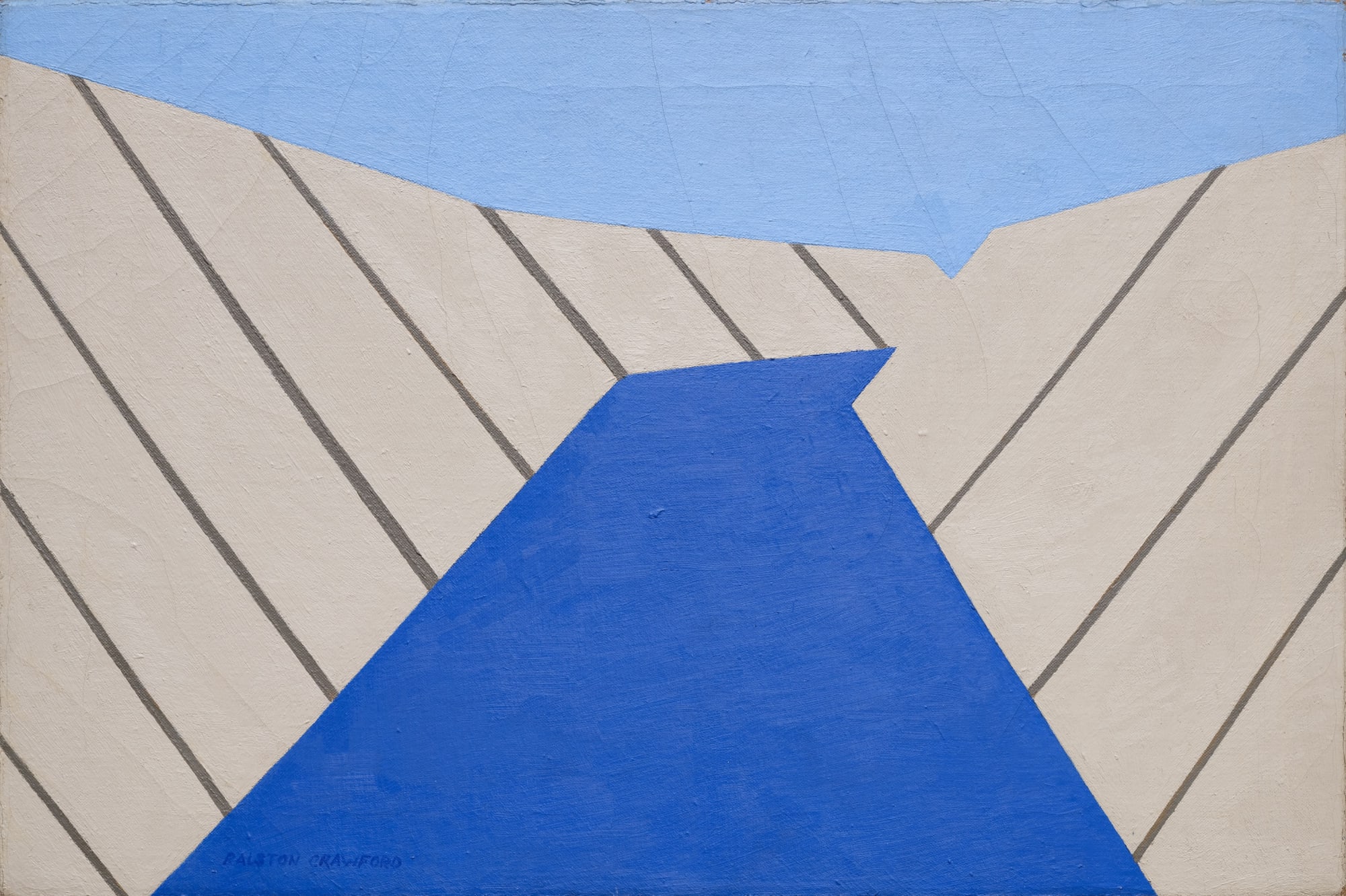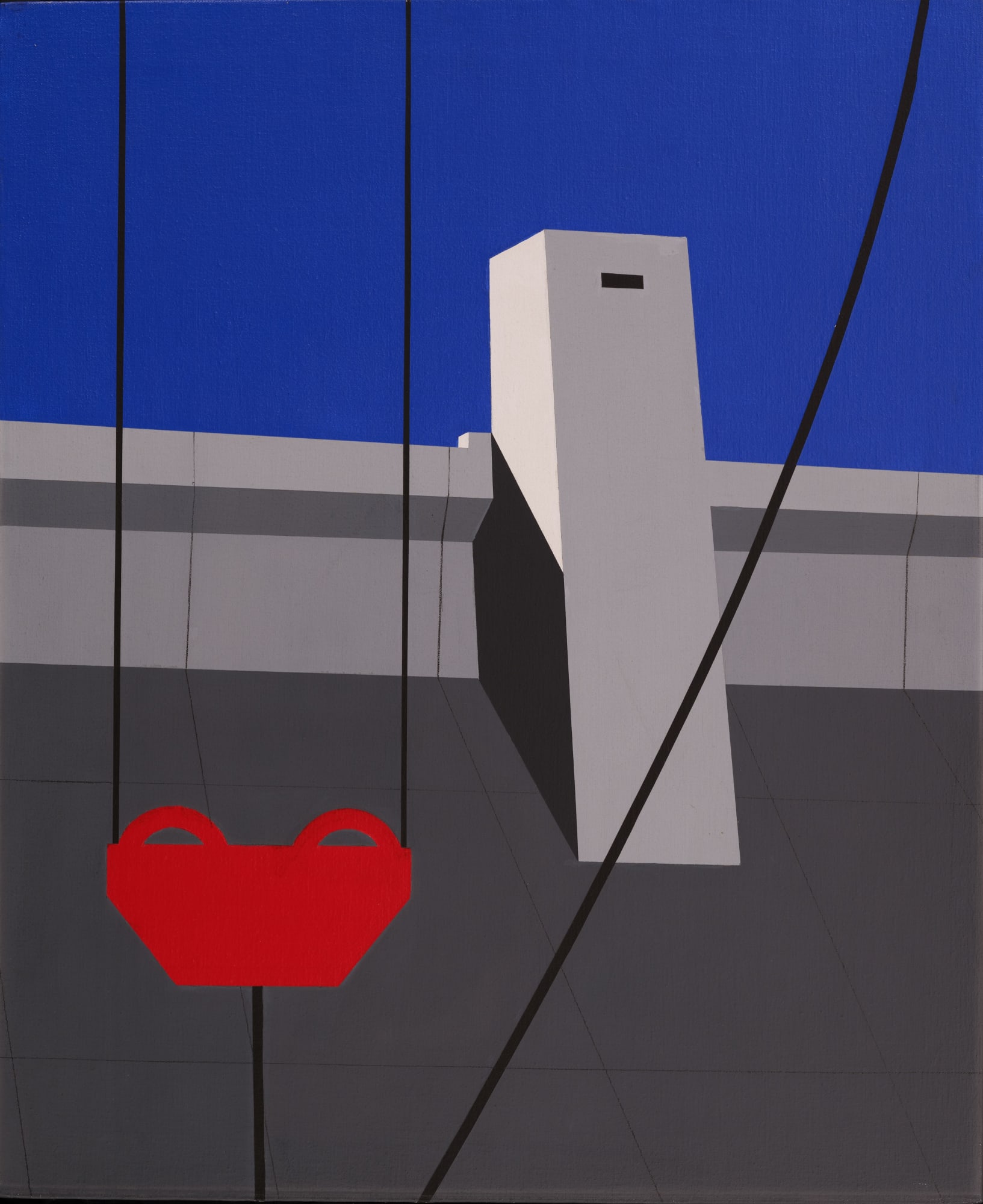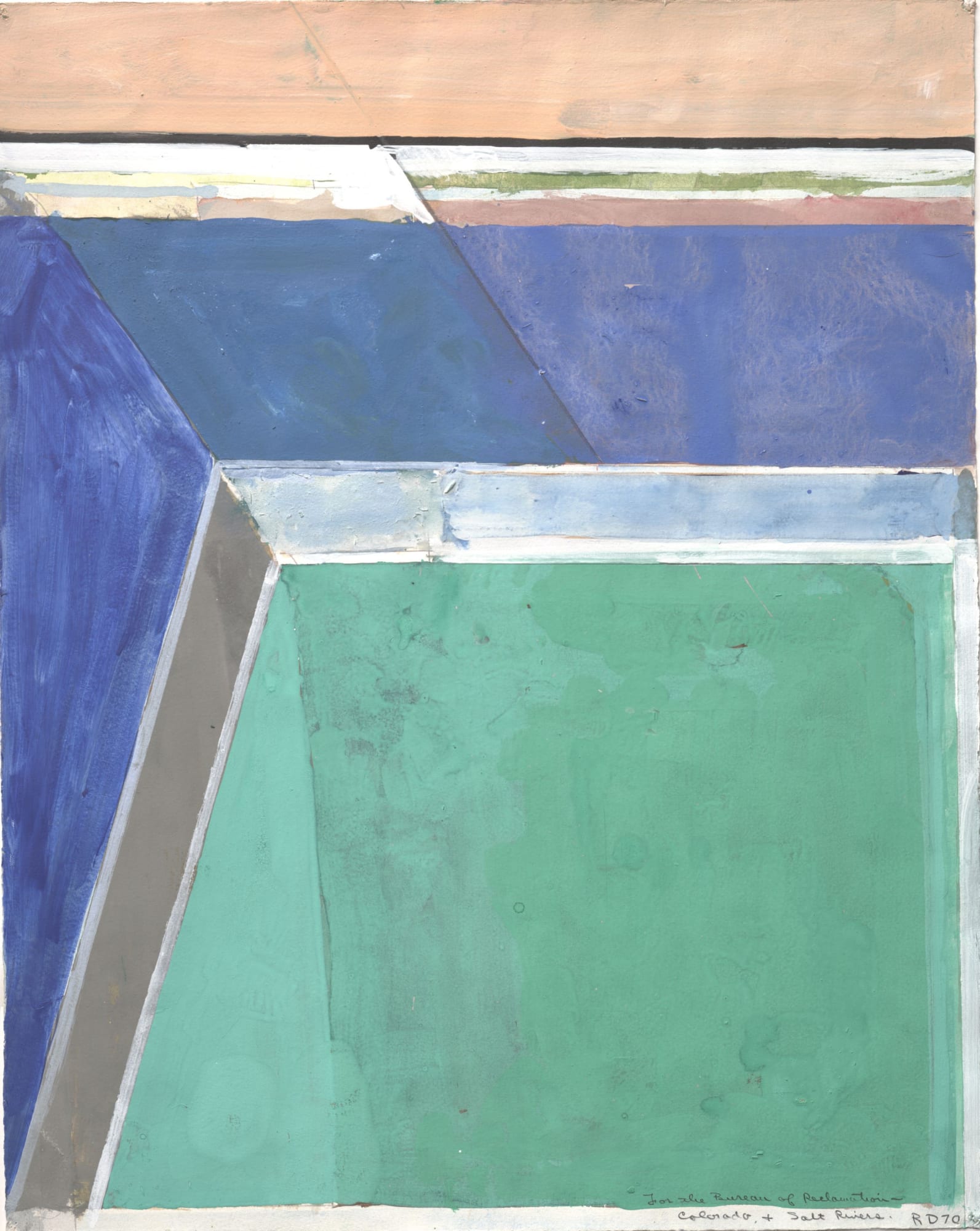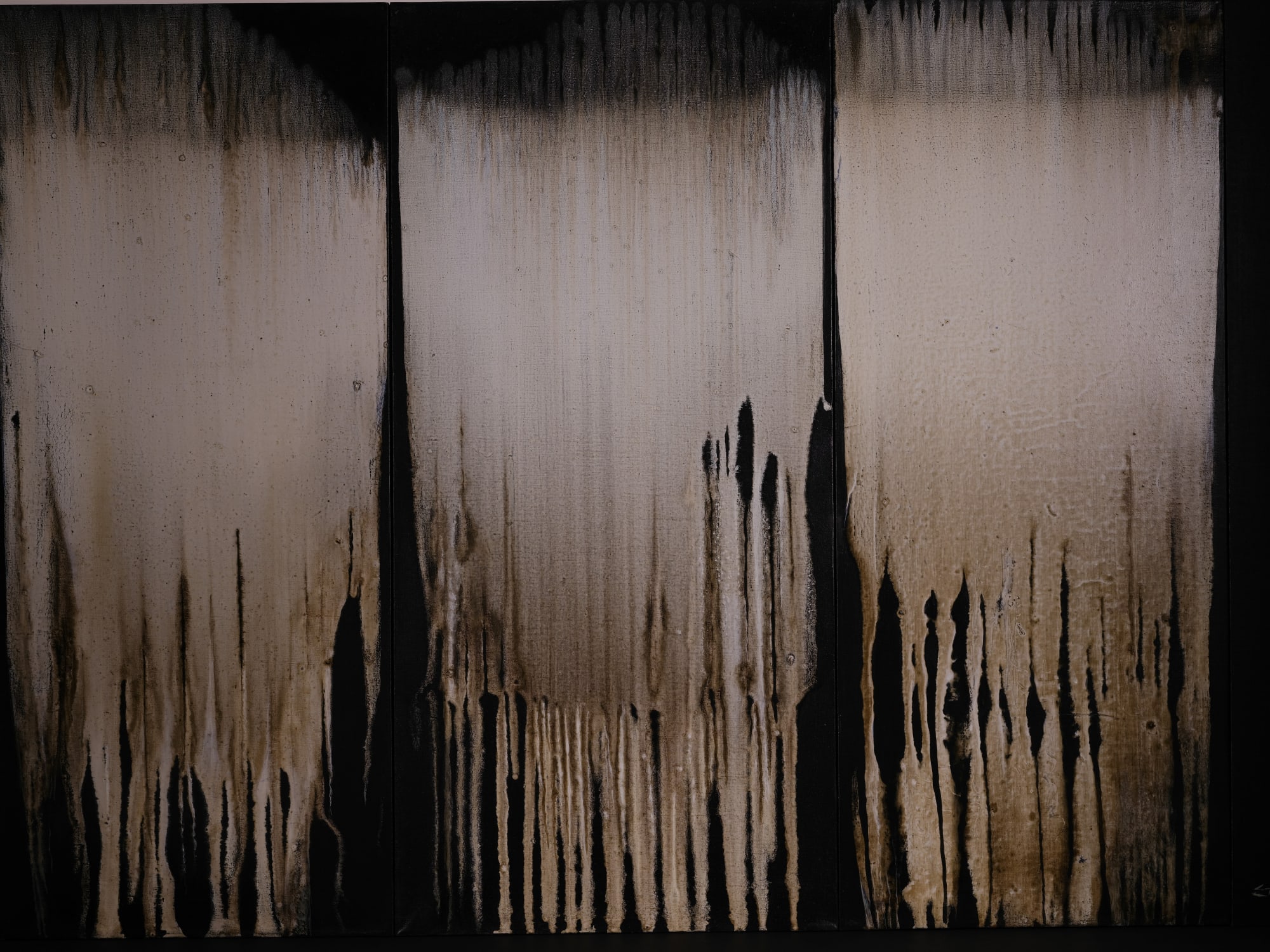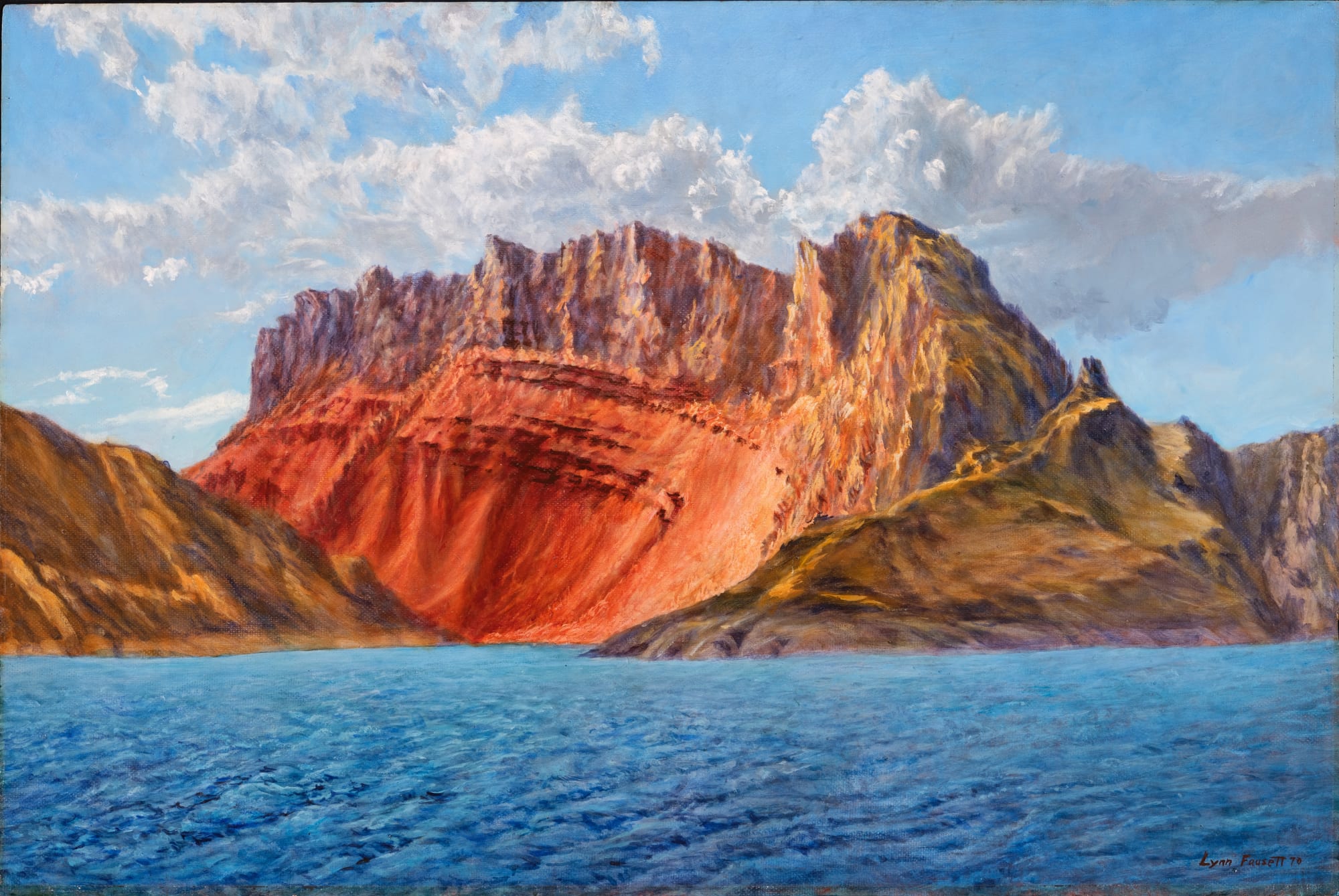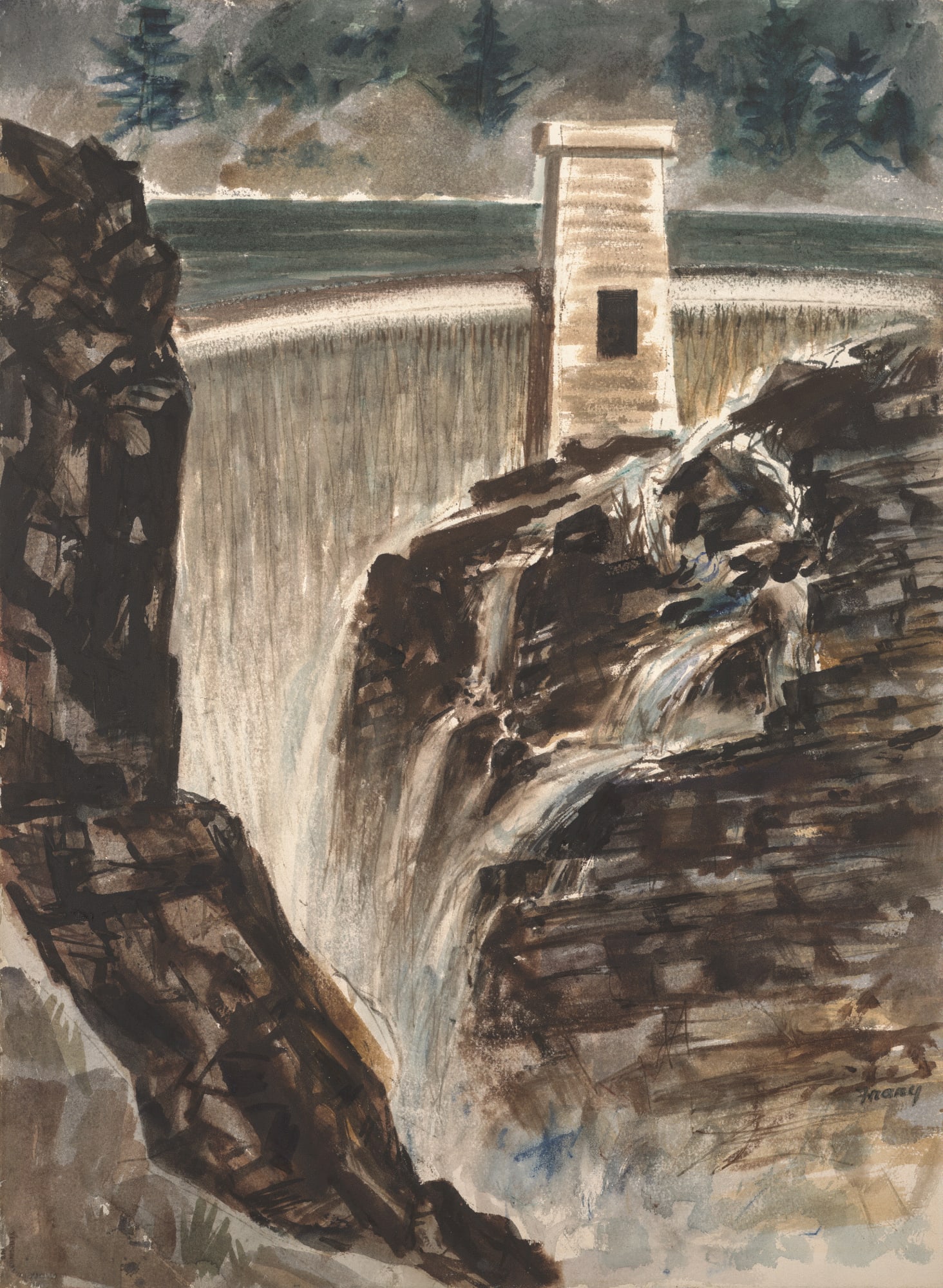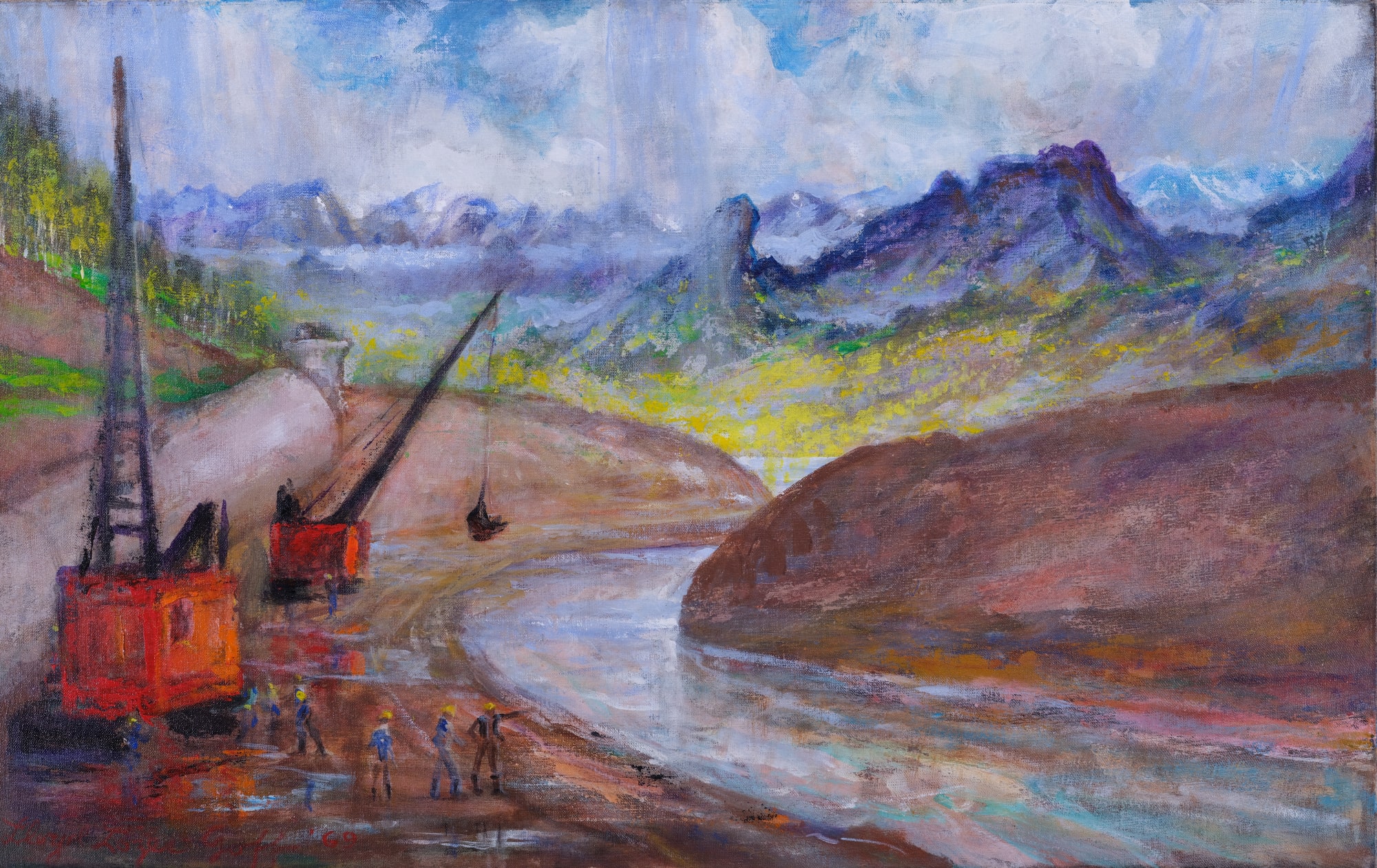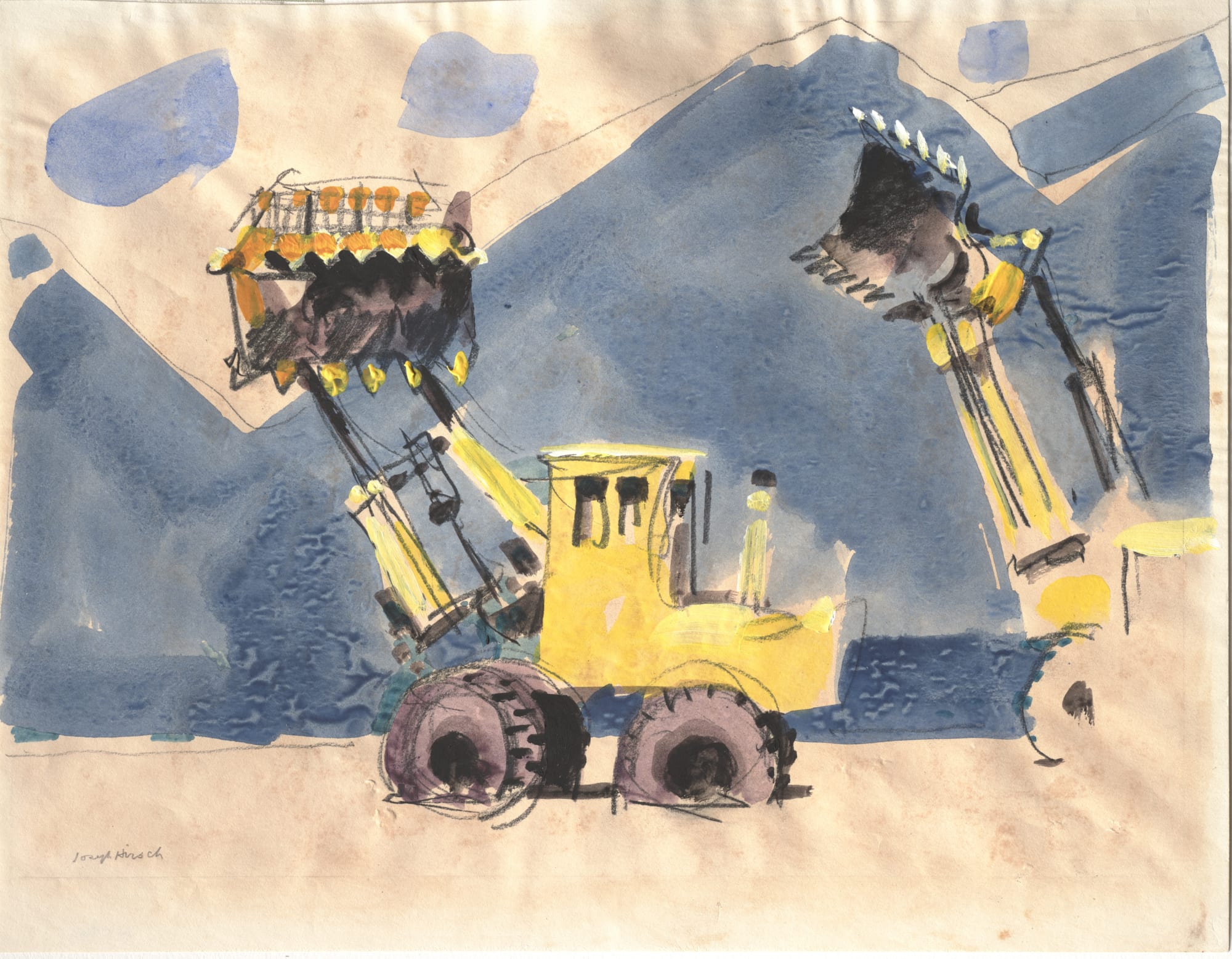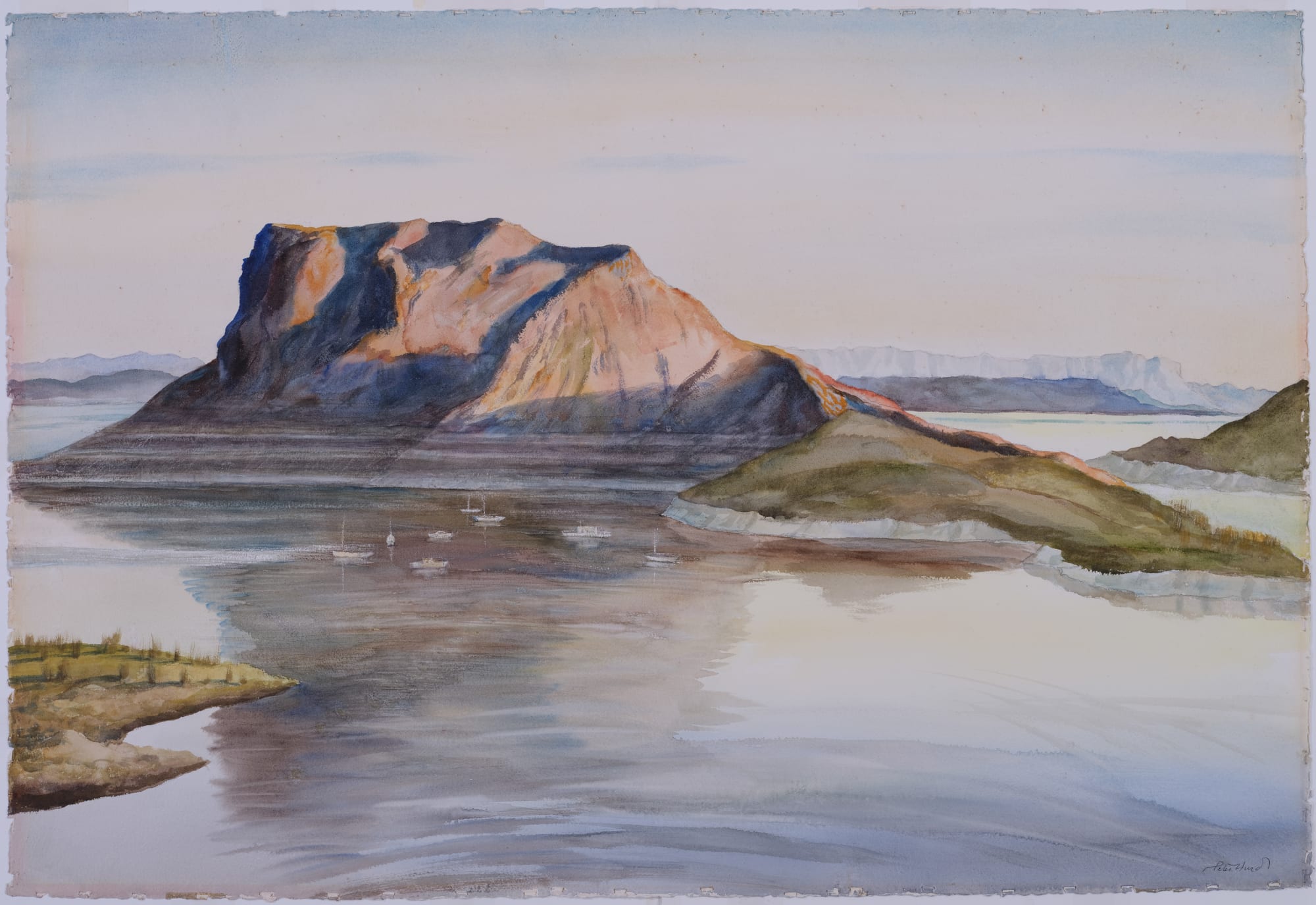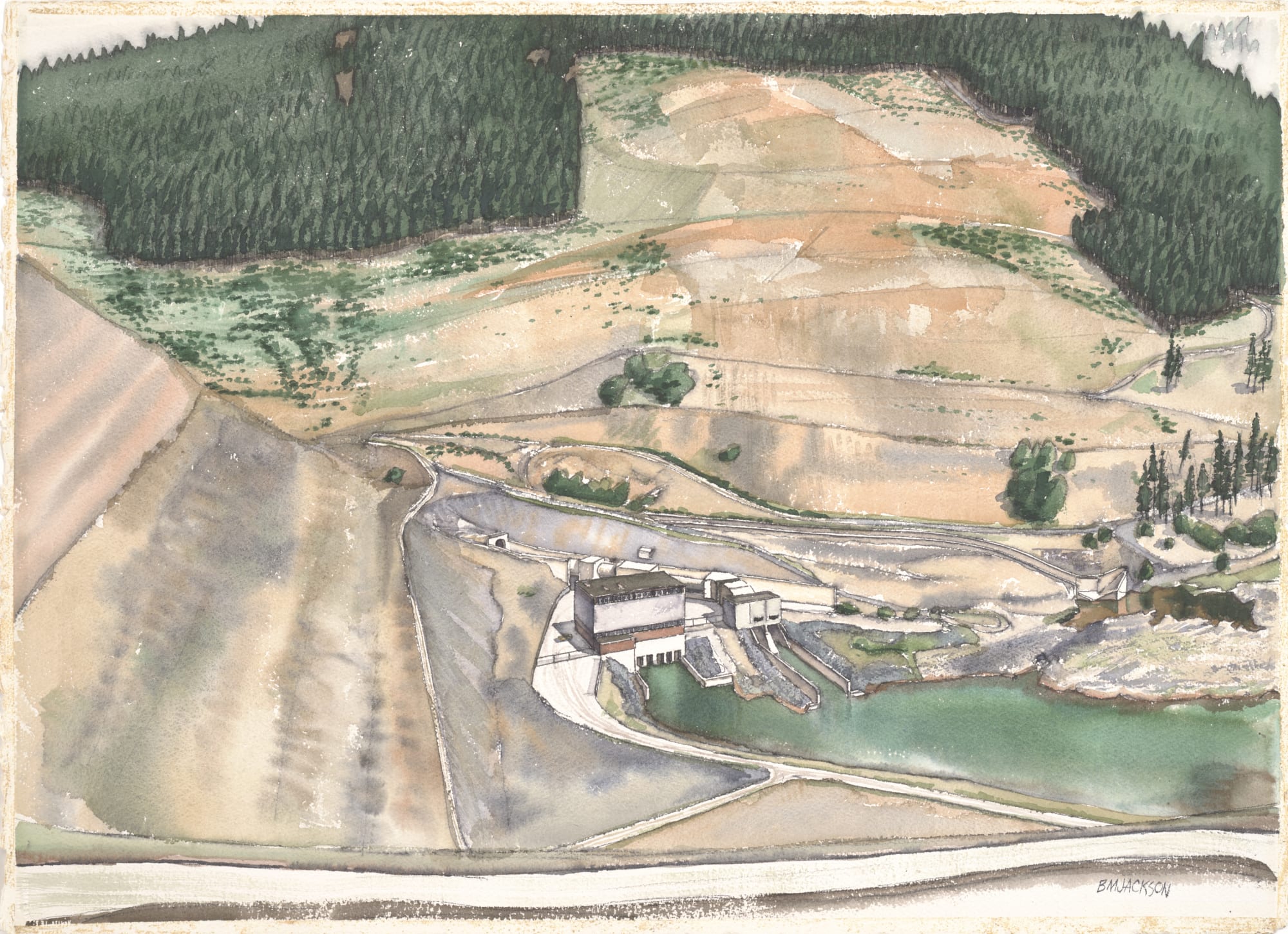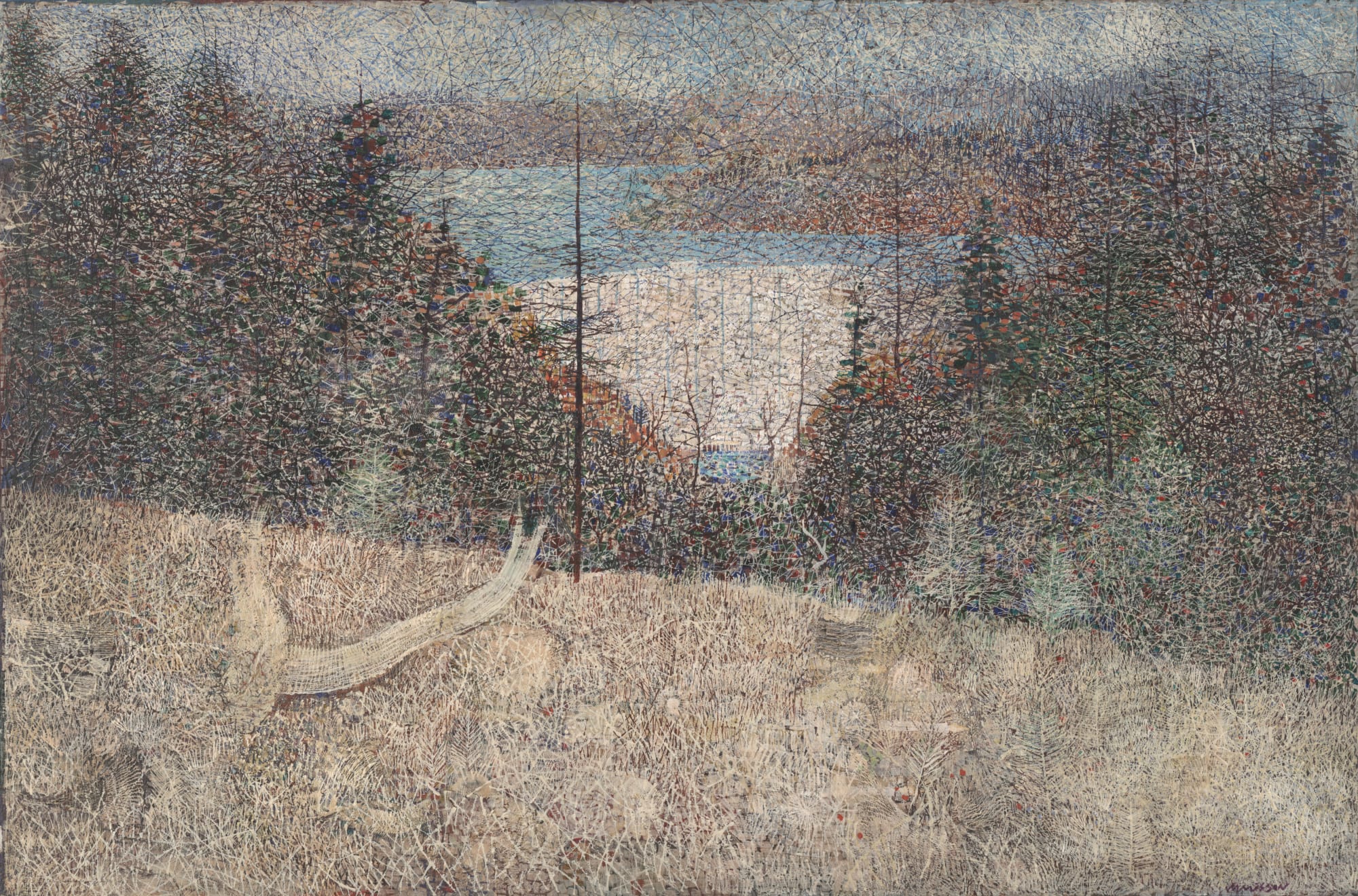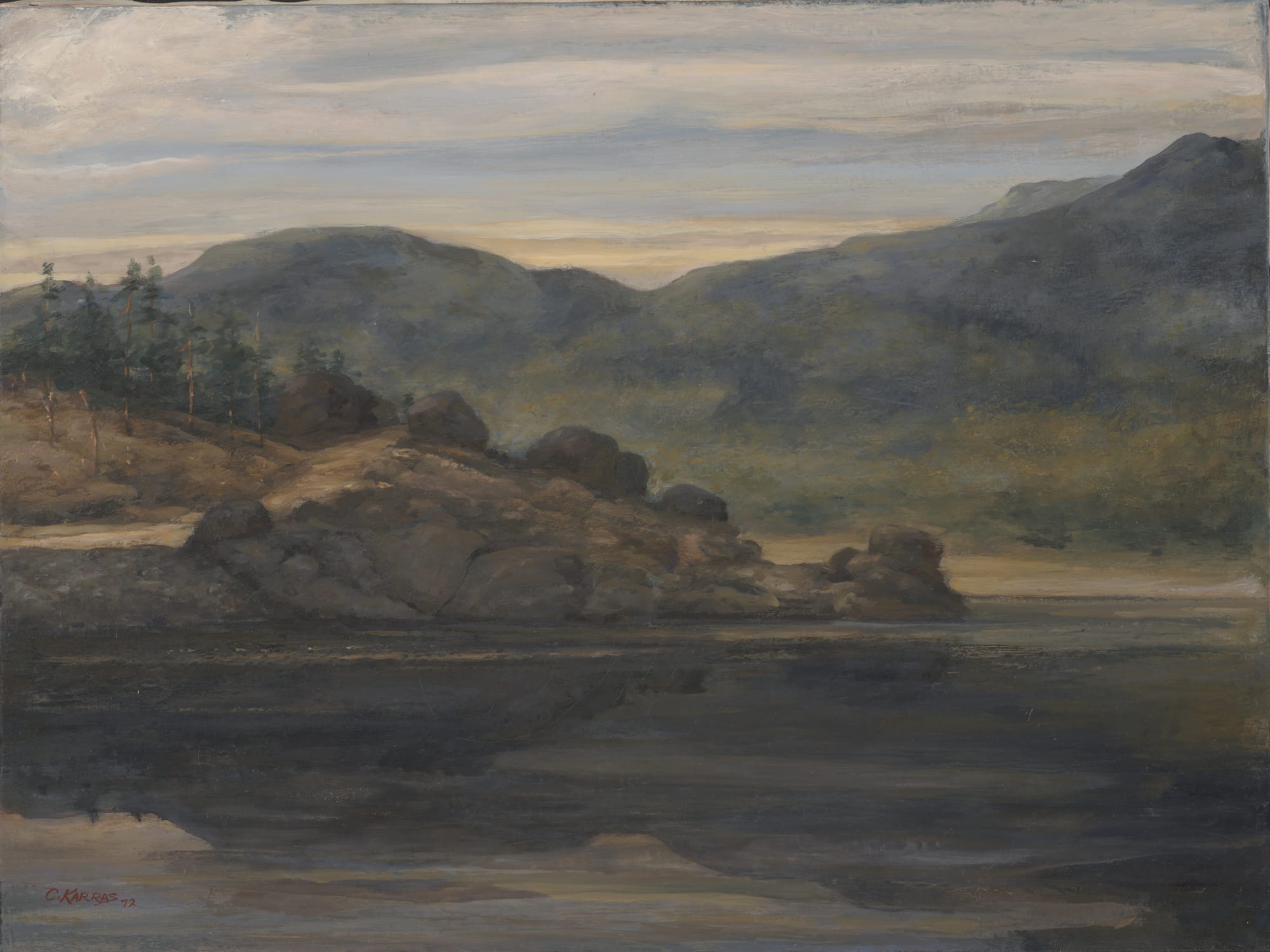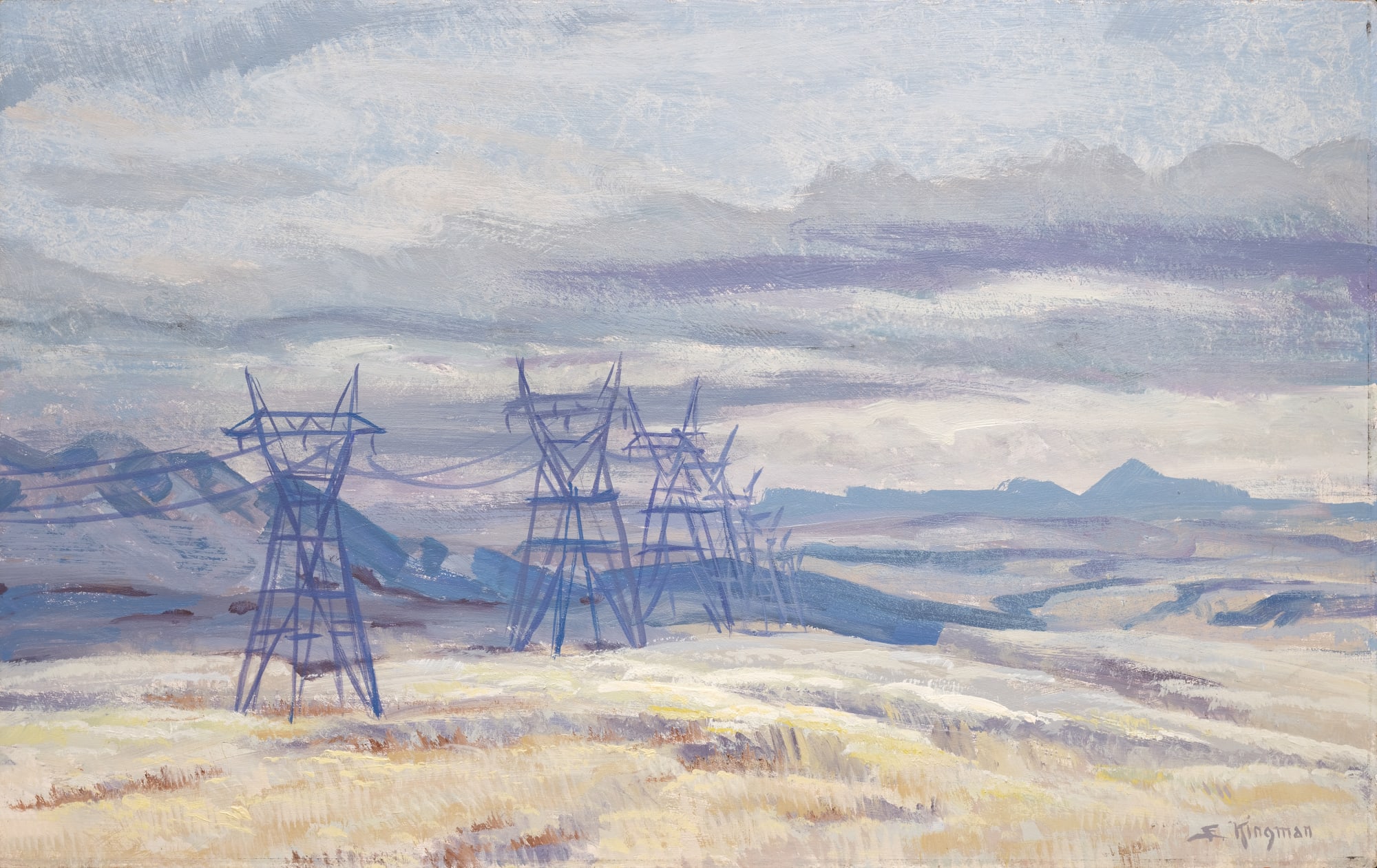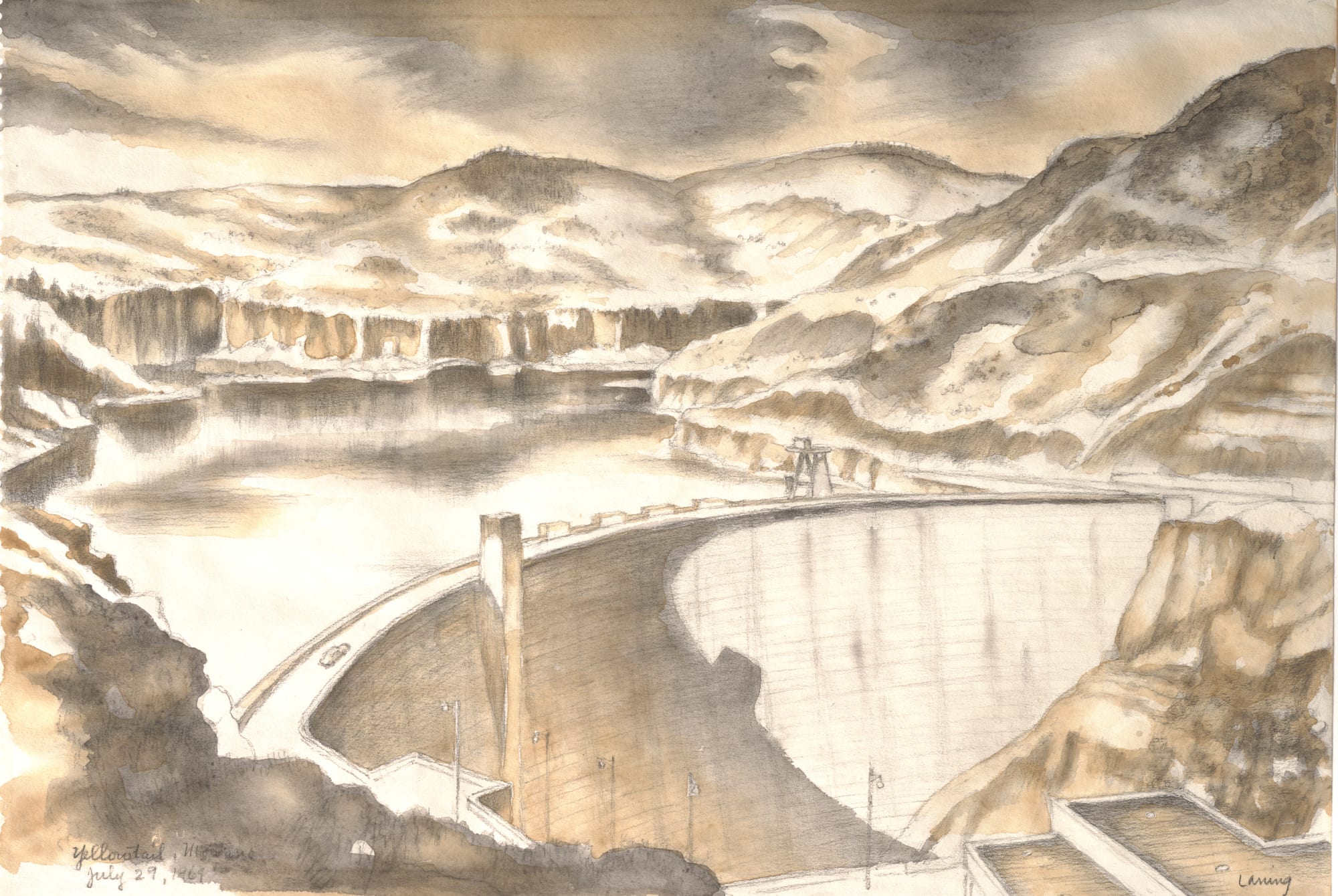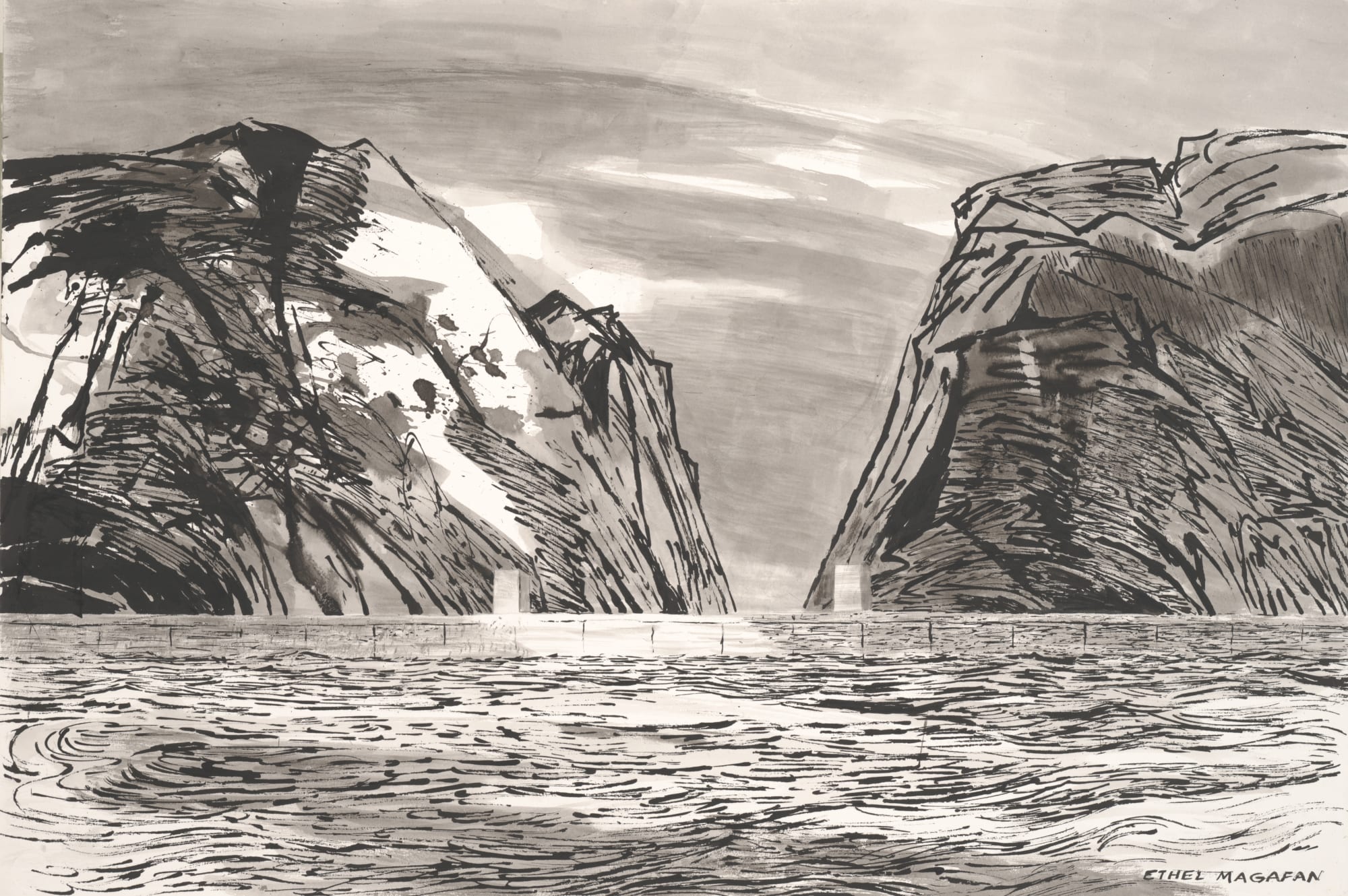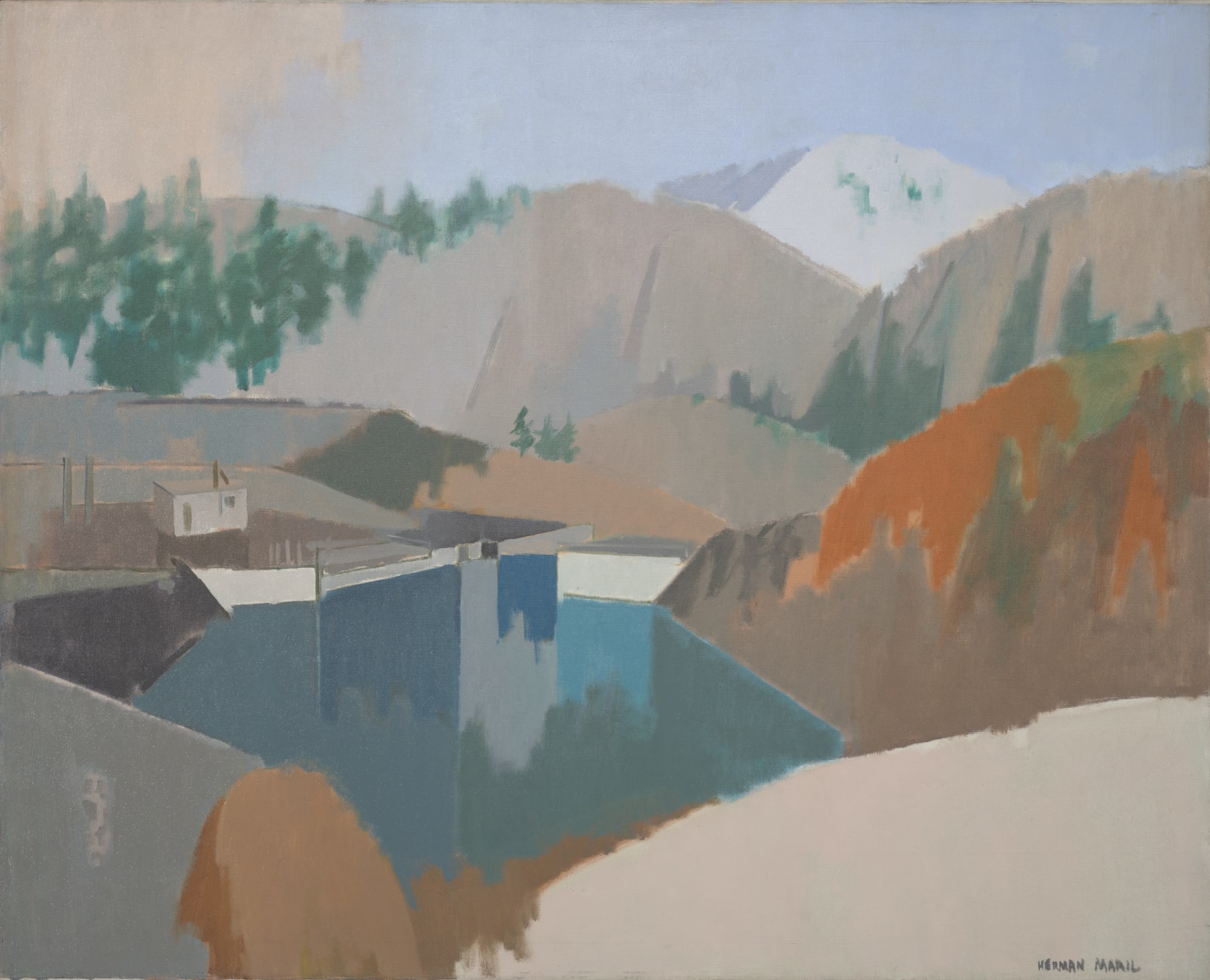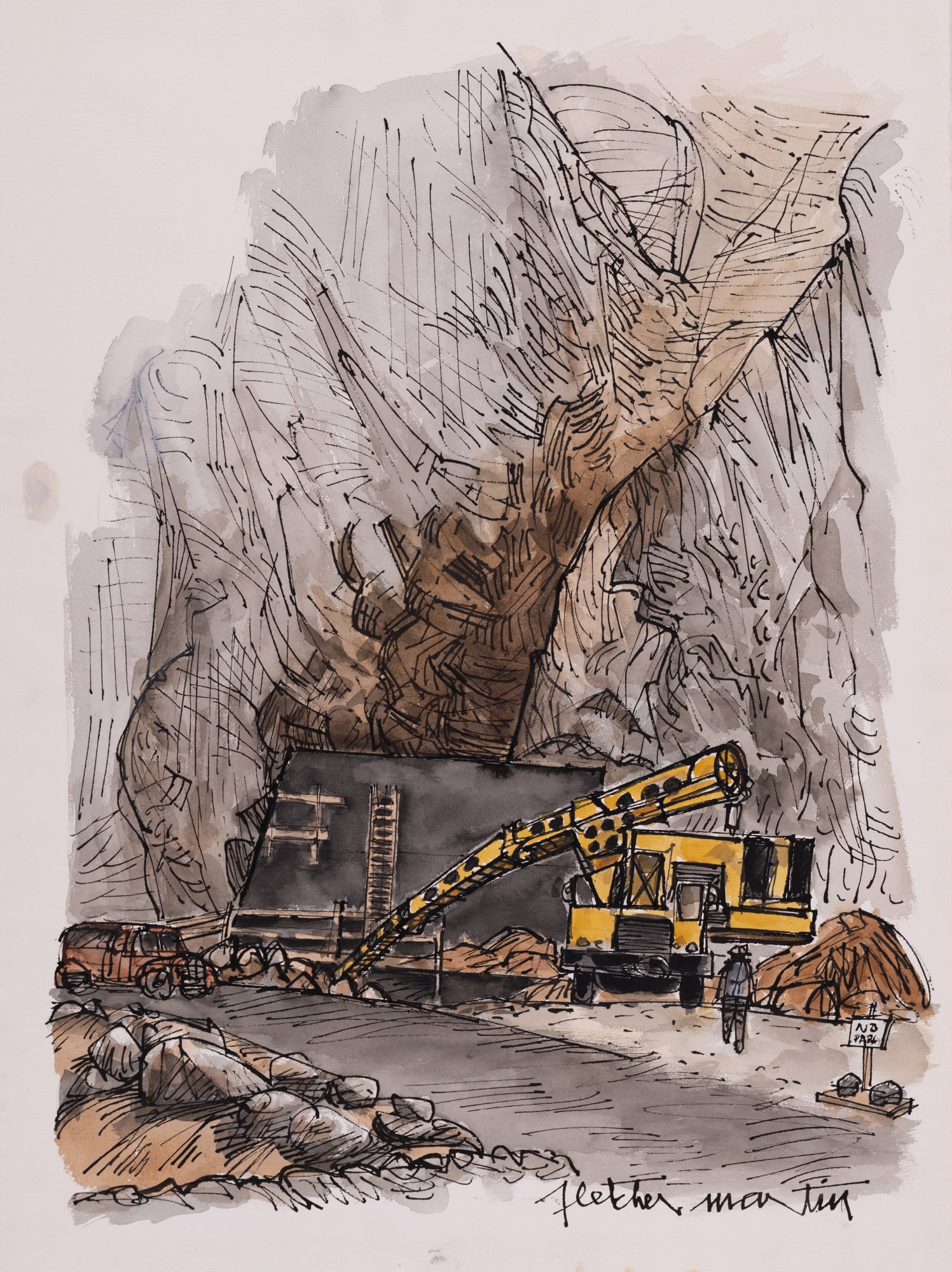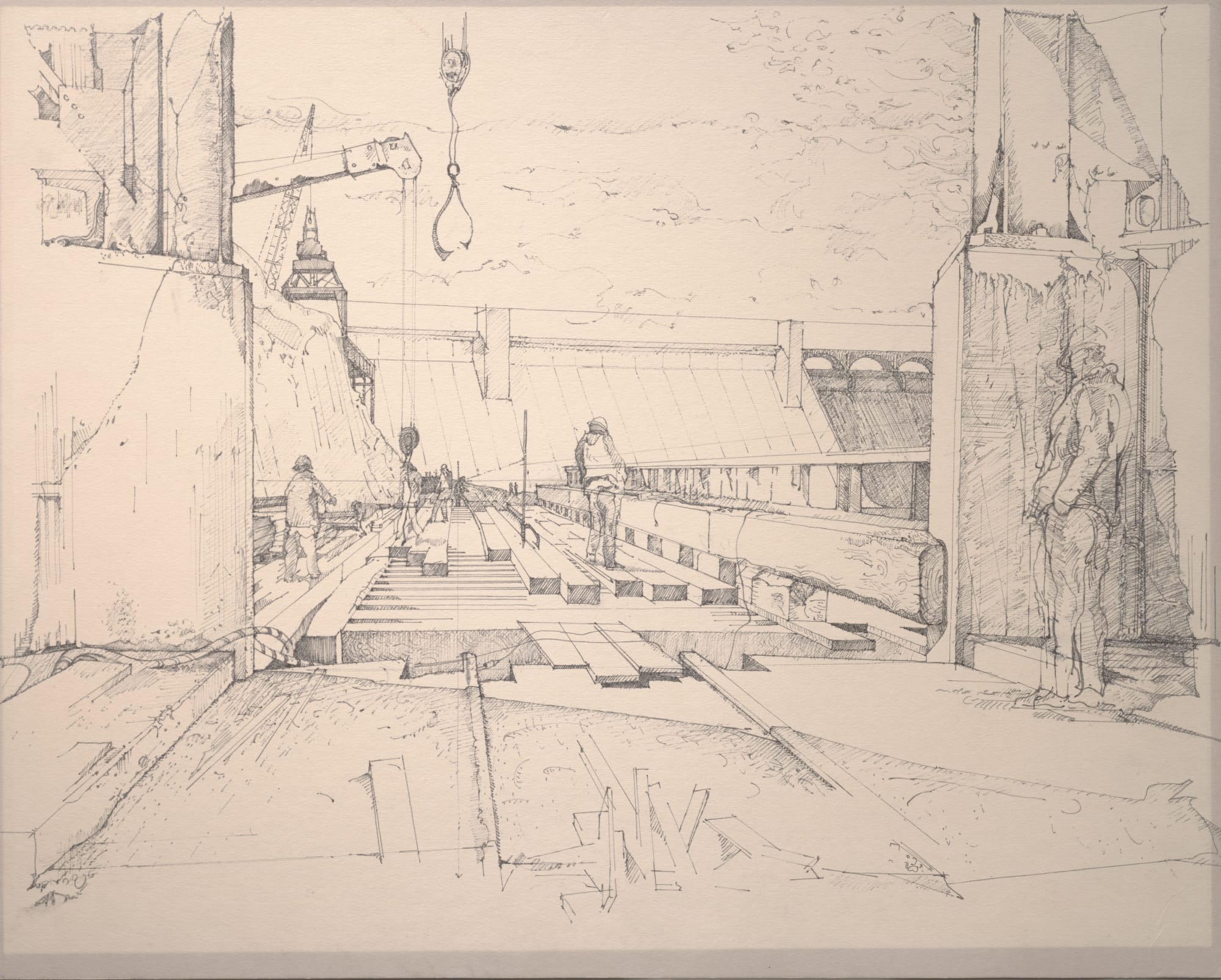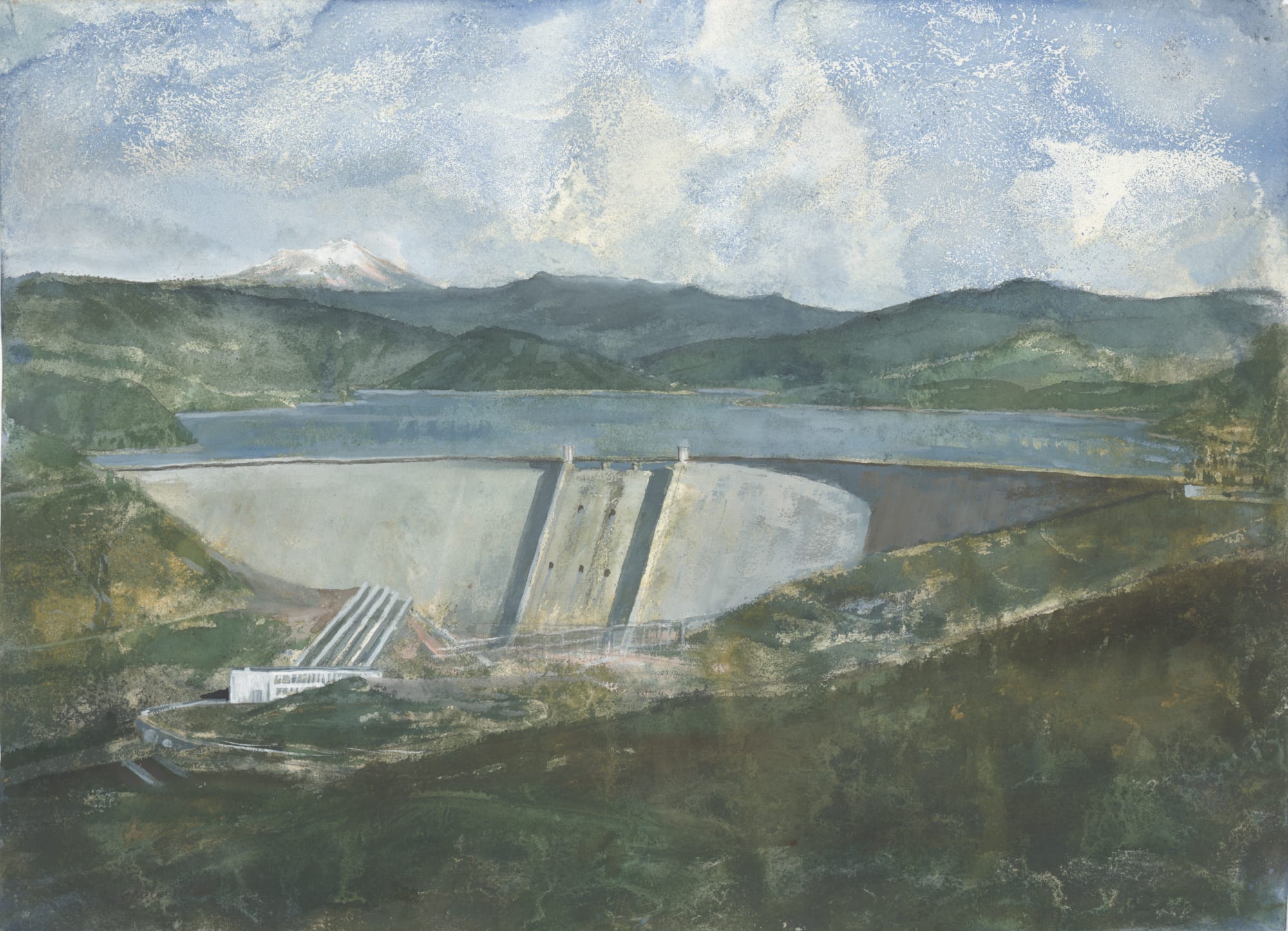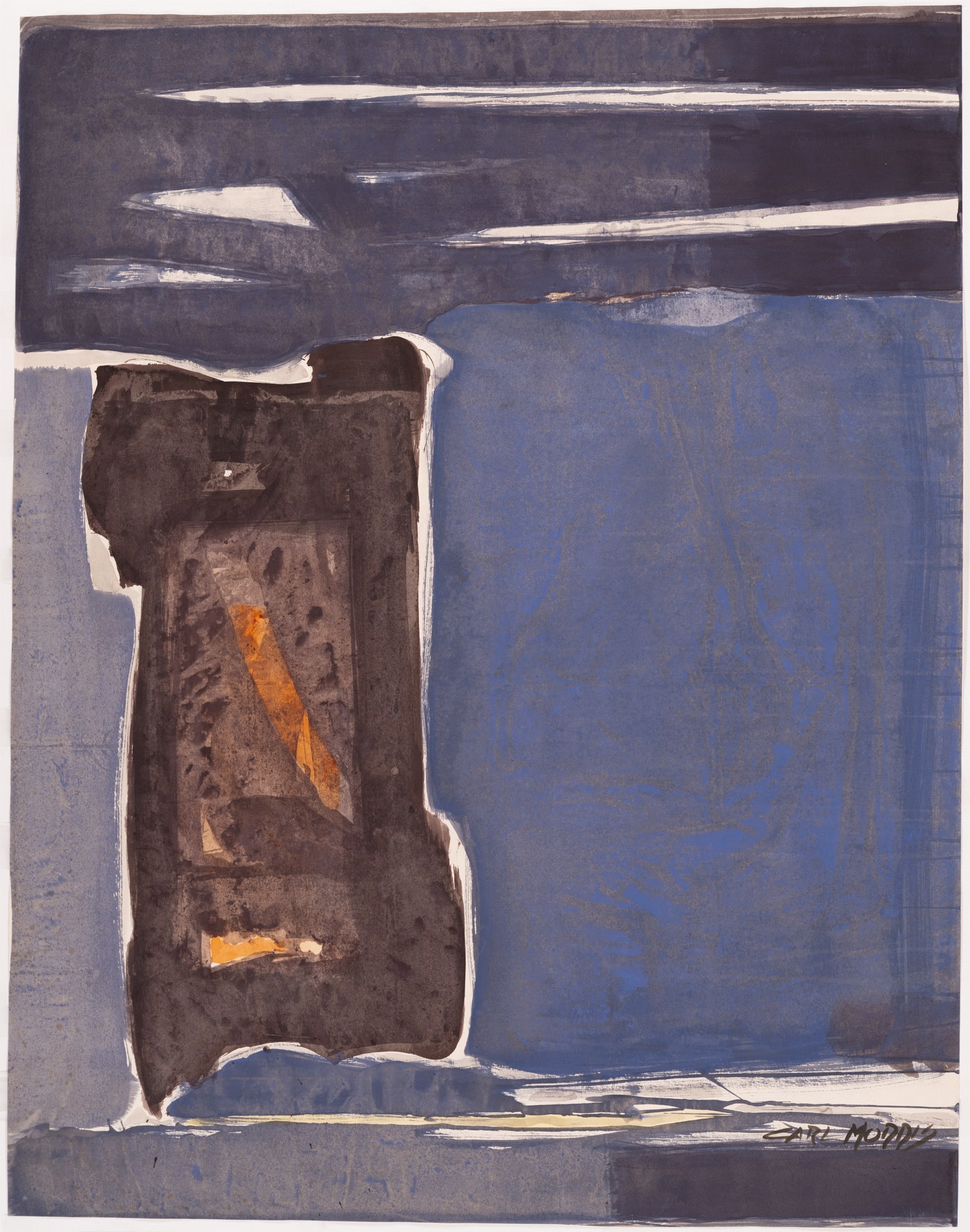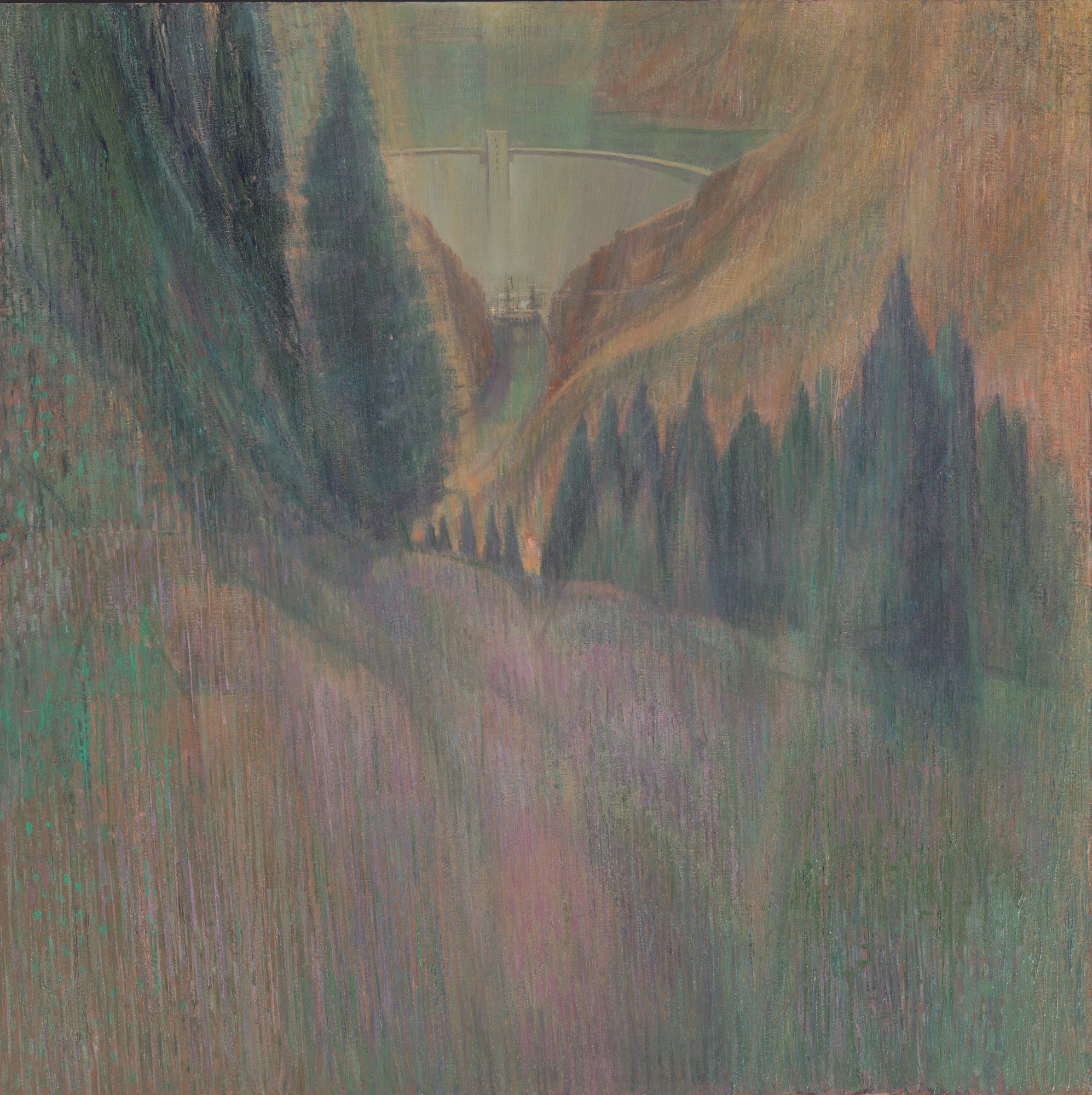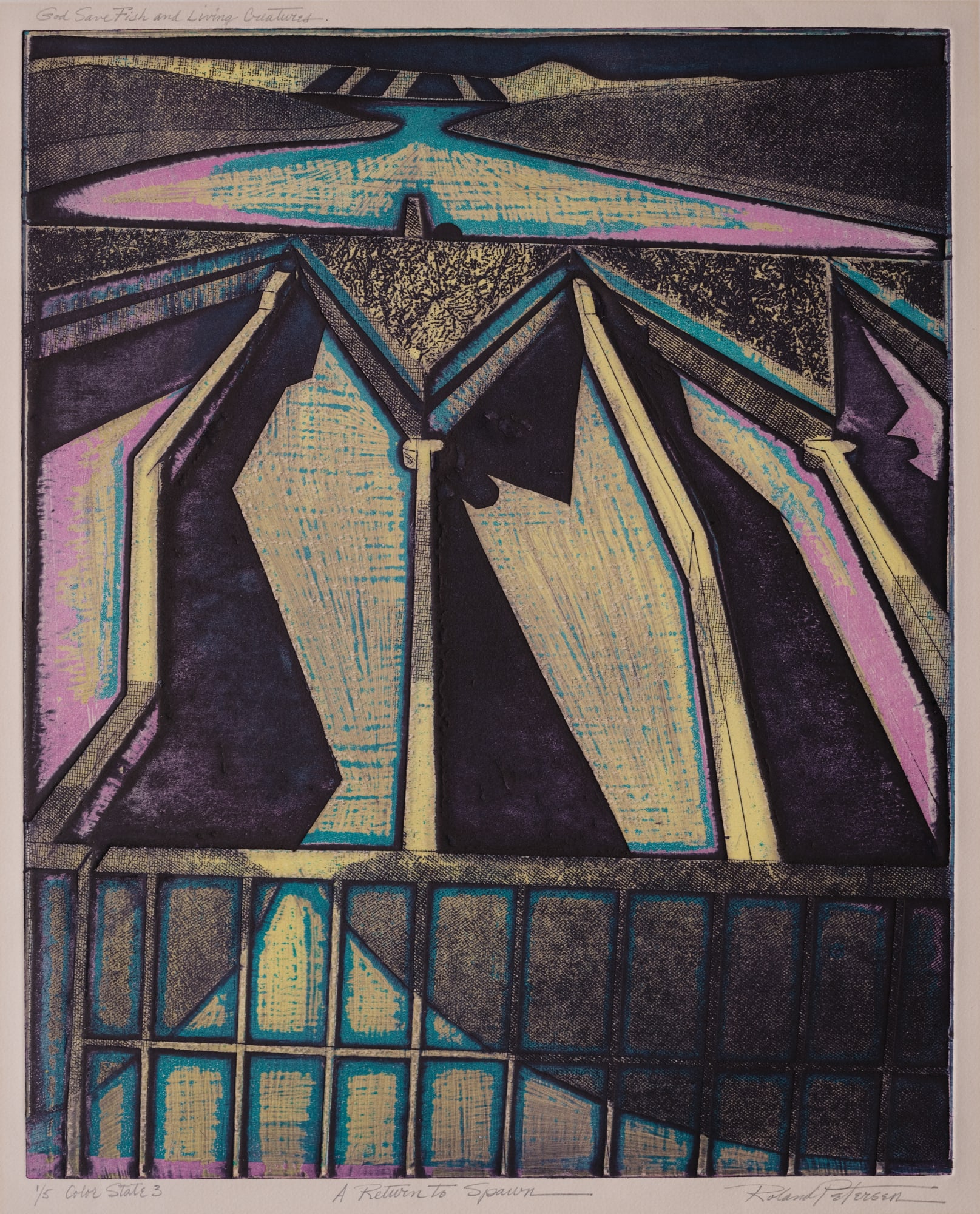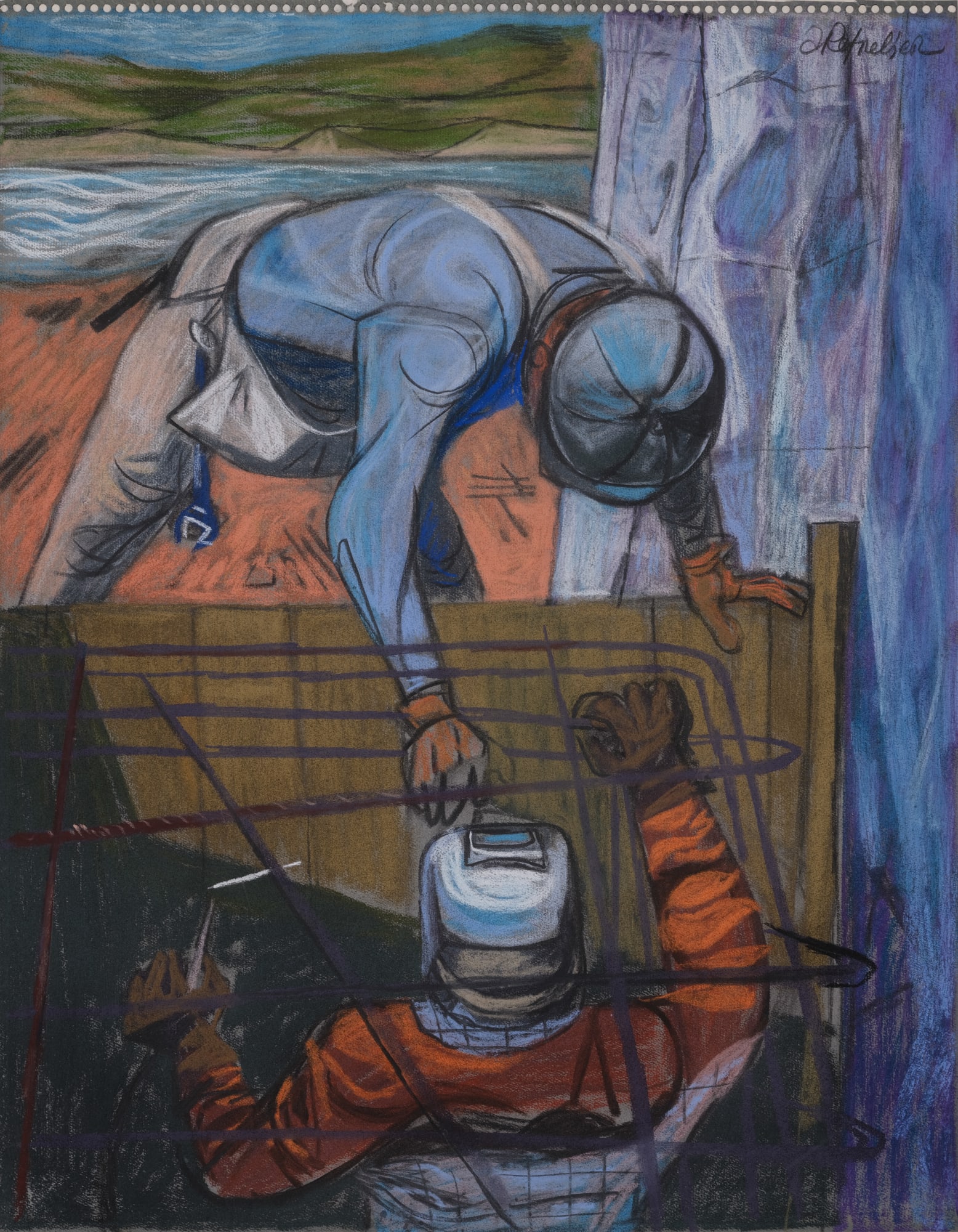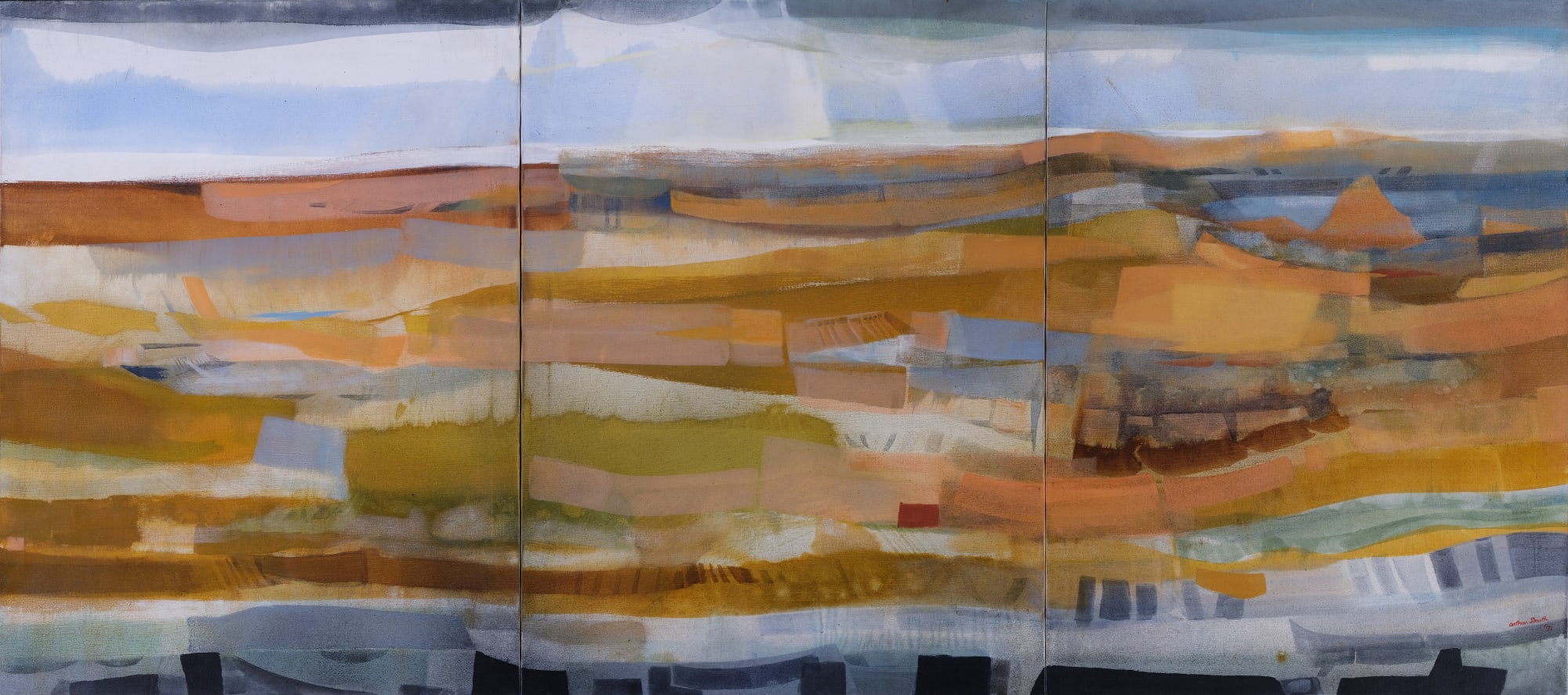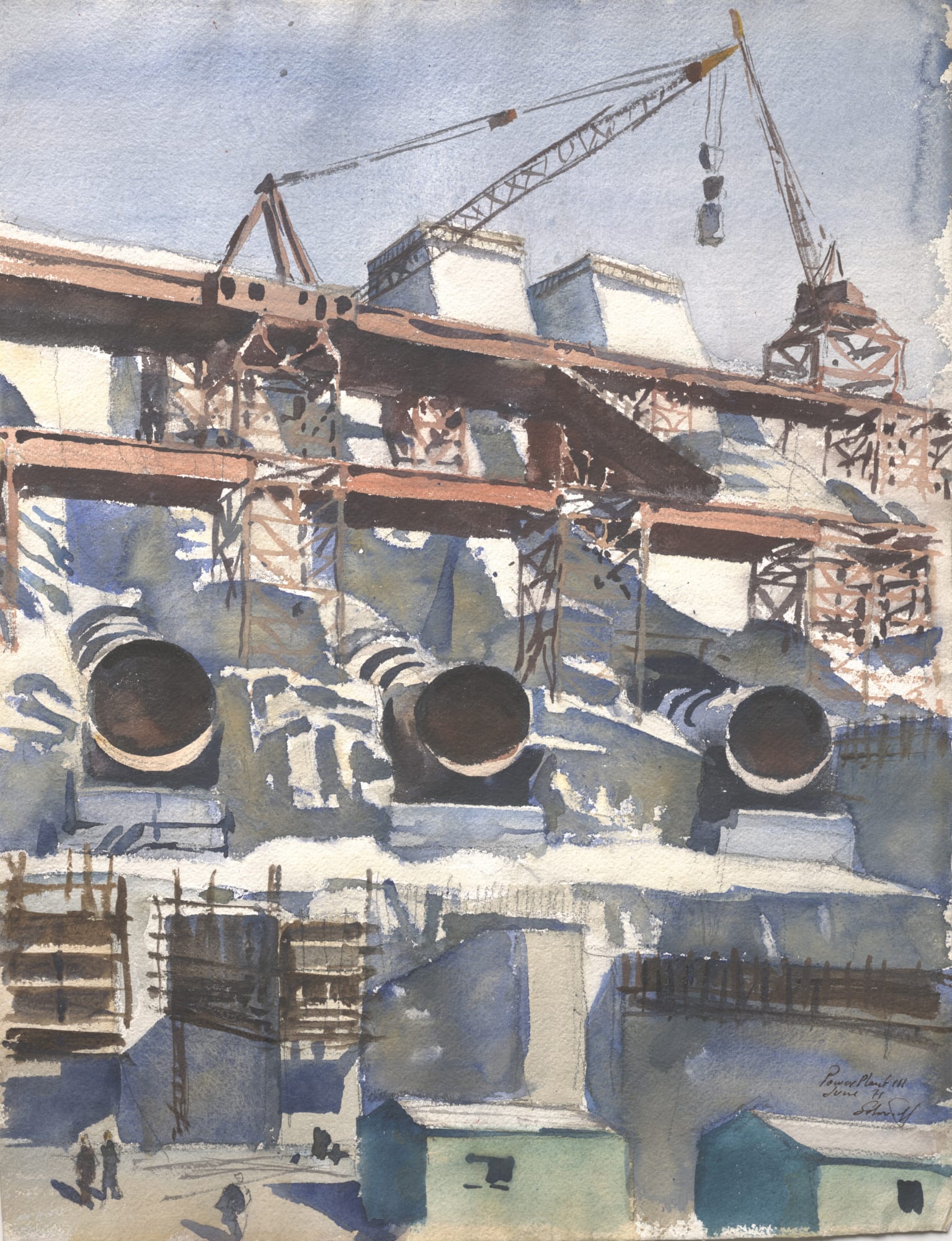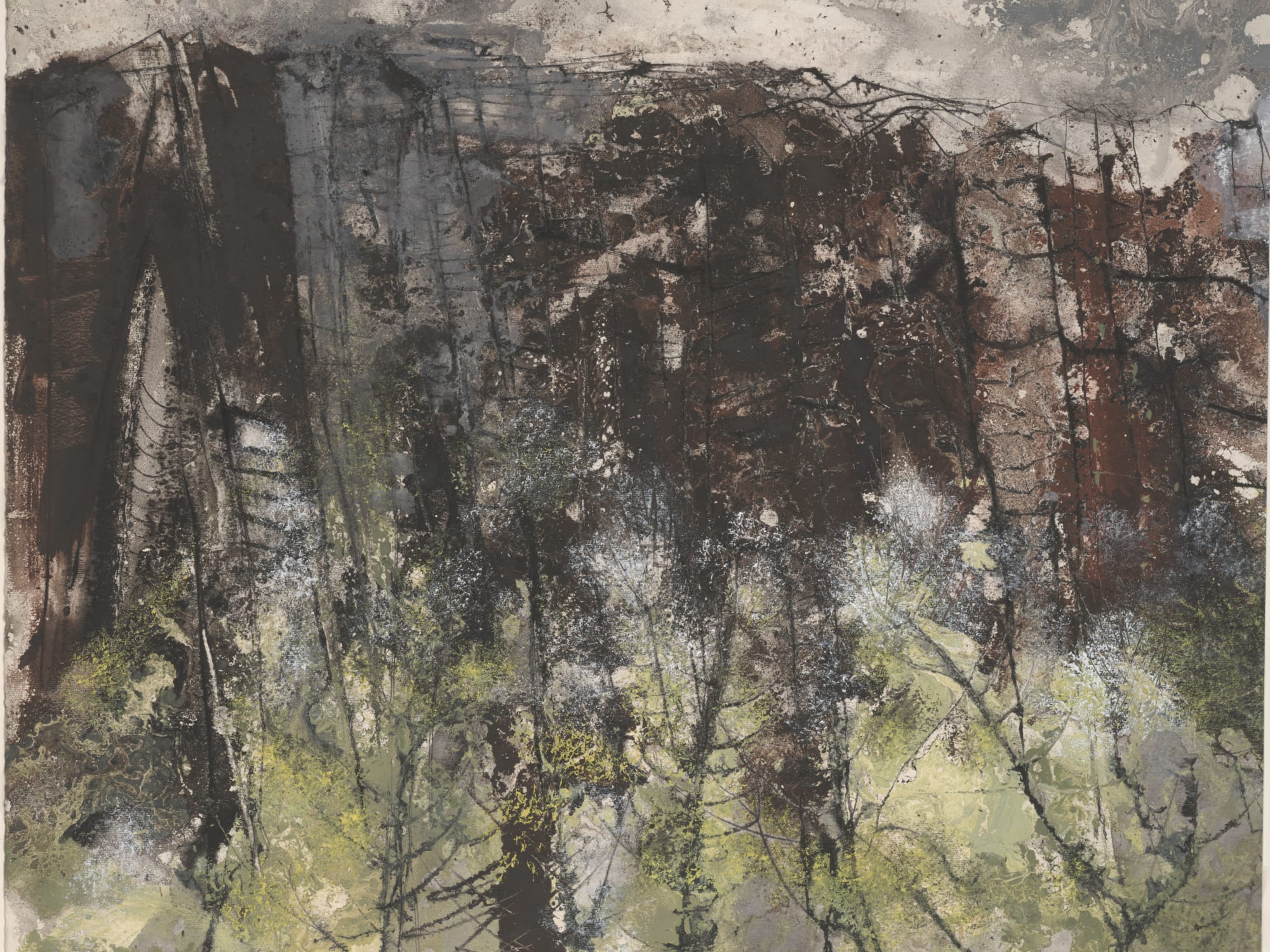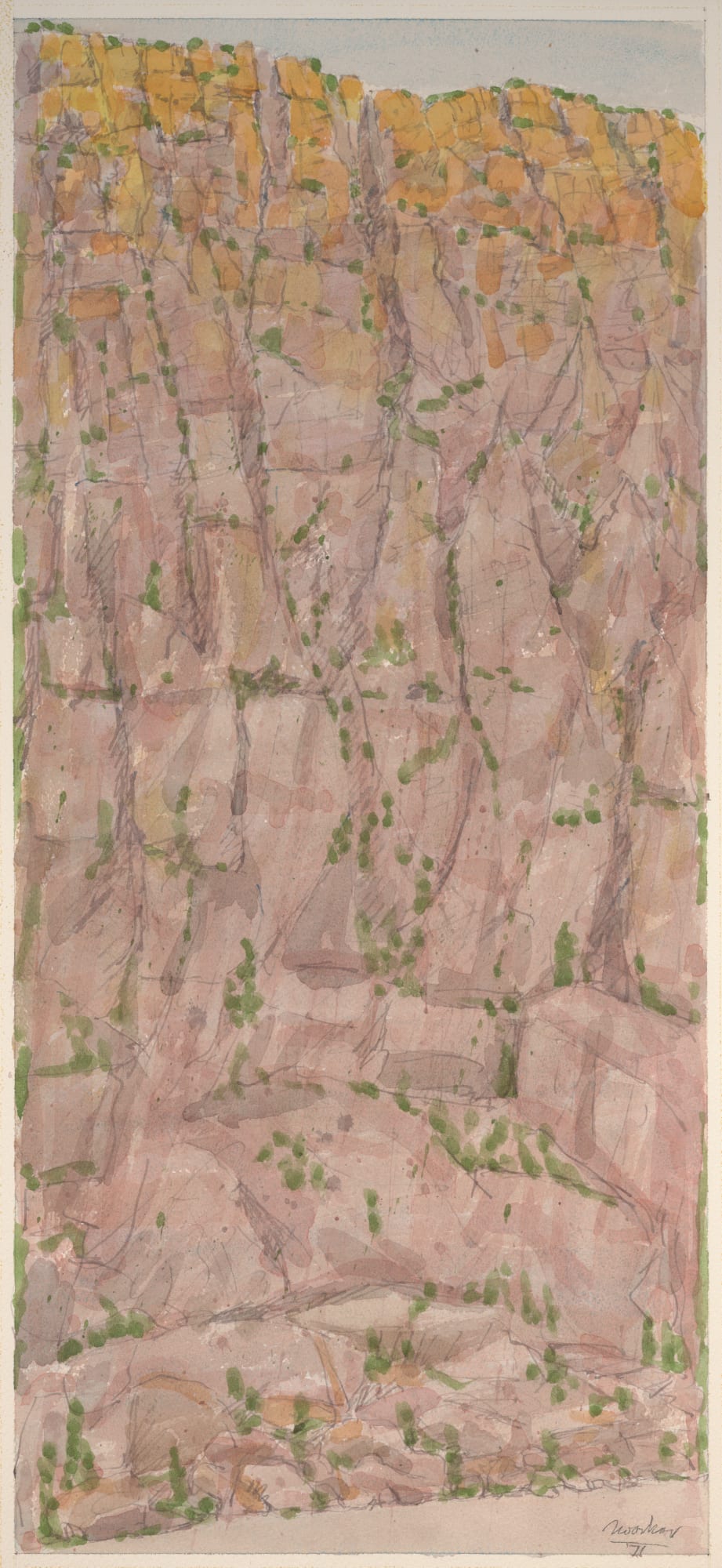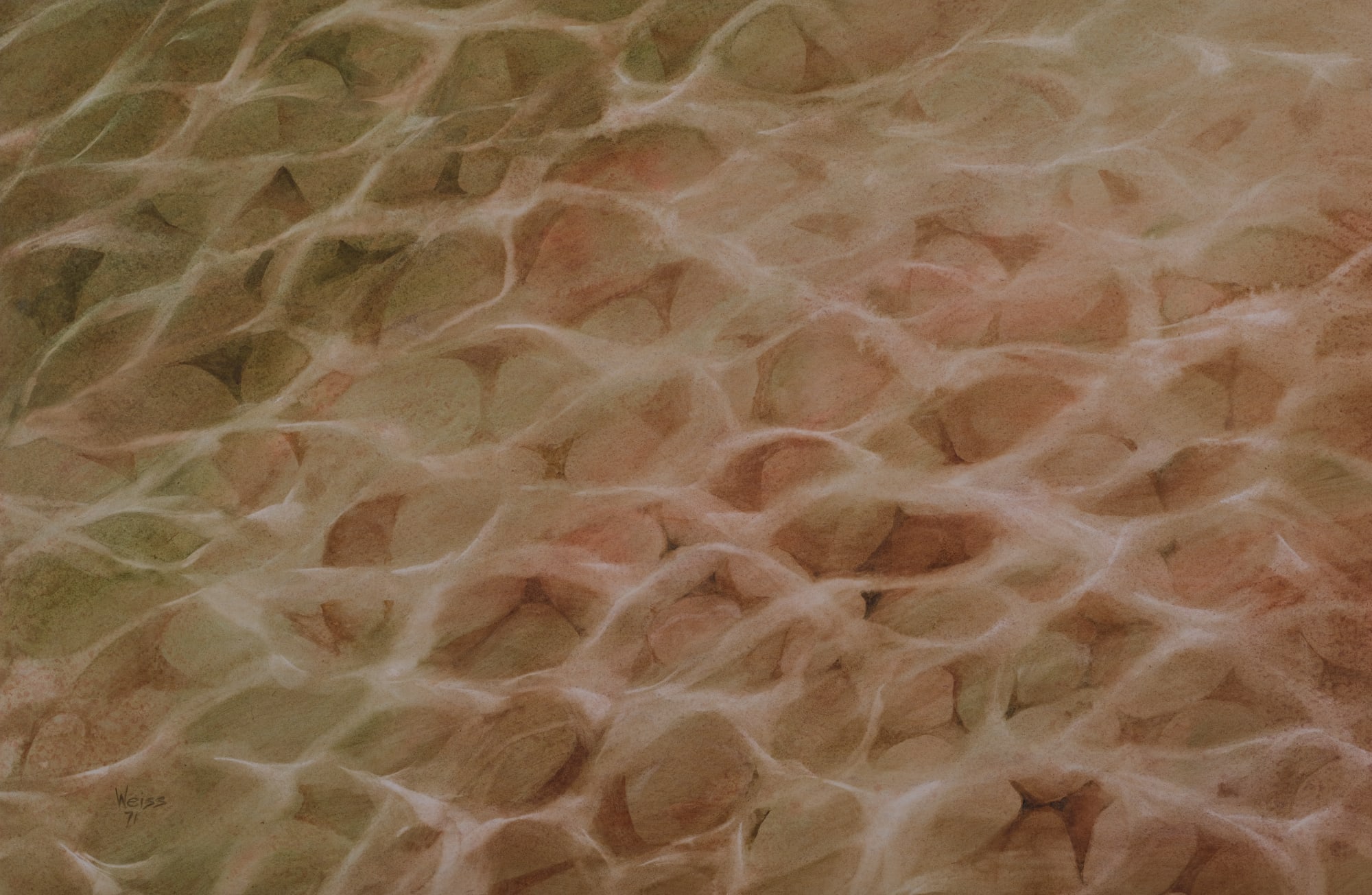In the late 1960s, the Bureau of Reclamation embarked on a program to present its accomplishments to the public through the medium of art. Under the direction of John DeWitt of the Commissioner's Office in Washington D.C., and Dr. Lloyd Goodrich, advisory director of the Whitney Museum of Modern Art in New York City, 40 of America's most prominent artists were commissioned to visit Reclamation's water resource development sites throughout the western United States and record their impressions on canvas. The artists were given a free hand to depict a subject of their choosing as long as it pertained to a Reclamation program - the development of the West's water resources for irrigation, hydropower generation, recreation, water conservation, and fish and wildlife enhancement. The artists were welcome to use whatever medium and style they wished, with spectacular results ranging from the abstract depiction of irrigated fields along the lower Colorado River as seen by Richard Diebenkorn, to Norman Rockwell's portrait of a Native American family overlooking Glen Canyon Dam, to Anton Refregier's scenes of construction activities at Grand Coulee Dam.
When the project was completed, more than 375 pieces of art had been created. In the early 1970s, many of the pieces were displayed to the public in a traveling exhibit circulated by the Smithsonian Institution entitled "The American Artist and Water Reclamation." Although many of the pieces were returned to the artists, Reclamation maintains a collection of about 200 pieces. Many paintings are displayed at the Main Interior Building and some regional offices, with one painting on exhibit at the Norman Rockwell Museum.
-
Jack Bradbury
-
Kenneth Callahan
-
Chen Chi
-
Hereward Lester Cooke
-
Ralston Crawford
-
Allan D'Arcangelo
-
Horace Day
-
James Dean
-
Richard Diebenkorn
-
Lamar Dodd
-
Ethel Edwards
-
Dean Fausett
-
Lynn Fausett
-
Michael Frary
-
Lloyd Lozes Goff
-
Xavier Gonzalez
-
Joseph Hirsch
-
Peter Hurd
-
Billy Morrow Jackson
-
Mitchell Jamieson
-
Chris Karras
-
Dong Kingman
-
Eugene Kingman
-
Edward Laning
-
Ethel Magafan
-
Herman Maril
-
Fletcher Martin
-
Alfred McAdams
-
John W. McCoy
-
Carl Morris
-
William C. Palmer
-
Roland Petersen
-
Anton Refregier
-
Norman Rockwell
-
Fritz Scholder
-
Arthur Hall Smith
-
Nicholas Solovioff
-
William Thon
-
Jack Tworkov
-
Lee Weiss


